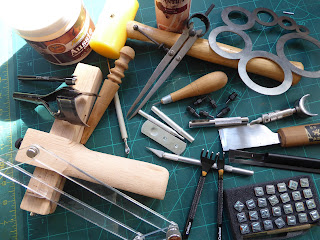Minimalist wallet

This week's project is making a minimalist wallet - useful for tucking into your shorts while you are enjoying the summer weather. I have used a remnant of furnishing leather scavenged from an old leather armchair but you can use whatever leather that you have available. as you can see I made one earlier from vegetable tanned tooling leather. If you are running short of larger pieces of leather you could even make the two inside pieces from a contrasting colour. This is the pattern for the three pieces that you are going to need. The outer is 9 inches by 4 inches. The cash holder is 5 & 3/4 inches by 3 inches. (I have just noticed a mistake in my pattern as there shouldn't be a notch cut in the cash holder). Finally the card holder is 4 inches by 2 and a half inches. These are the three pieces cut to size. Accurate cutting with exact right angled corners is most important. If you are using vegetable tanned tooling leather this is the point to stamp any decoratio...


